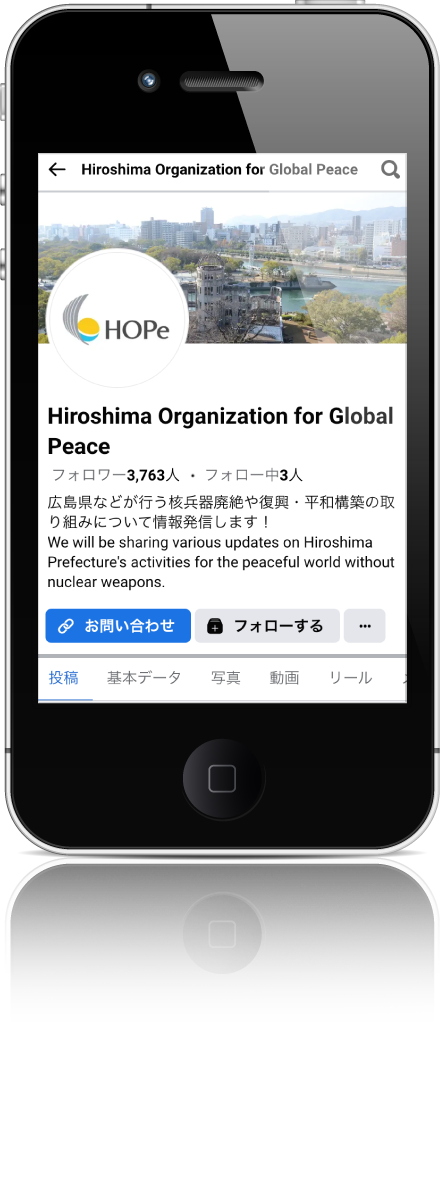Research Results and
Recommendations for Download
November 16 (Sat.) Day 4
○ Day 4 program
・(For those interested) Guided tour of A-bombed trees (at Hiroshima Castle)
・Presentation of training results (open session)
The four-day program of the Hiroshima-Ican Academy finally reached its final day.
On this day, those who wished to participate gathered early in the morning and headed to Hiroshima Castle to see the A-bombed trees.
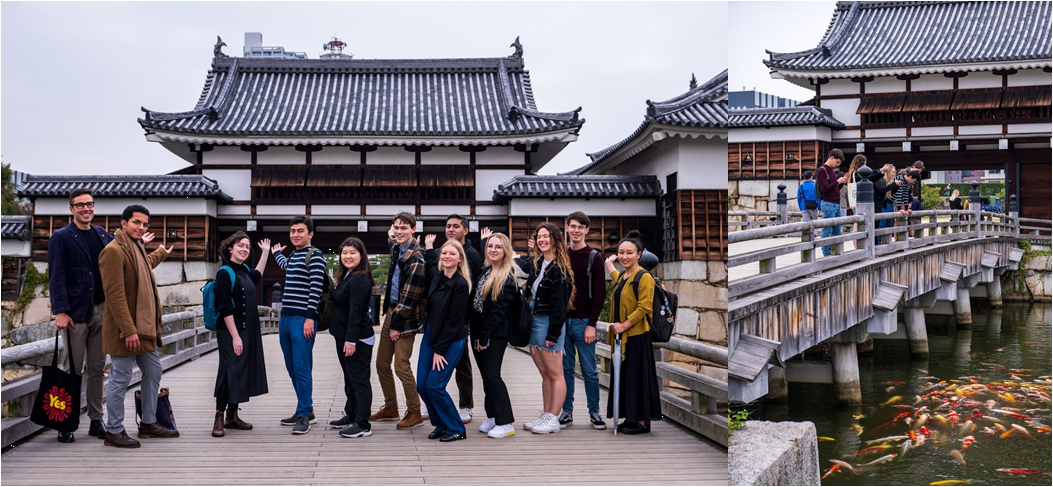
In the early morning, there were few people at Hiroshima Castle, and the peaceful atmosphere allowed us to take our time to look around the A-bombed trees. After the atomic bomb was dropped, Hiroshima was a burnt-out city on all sides, so devastated that it was said that “not even grass or trees would grow for 75 years.”
The A-bombed trees that survived the blast and heat rays sprouted bright green buds in the ashen city of Hiroshima, giving the people of Hiroshima the courage to live after they had been overcome with despair. For nearly 80 years since then, the A-bombed trees have been “silent witnesses” to the reality of the atomic bombing.
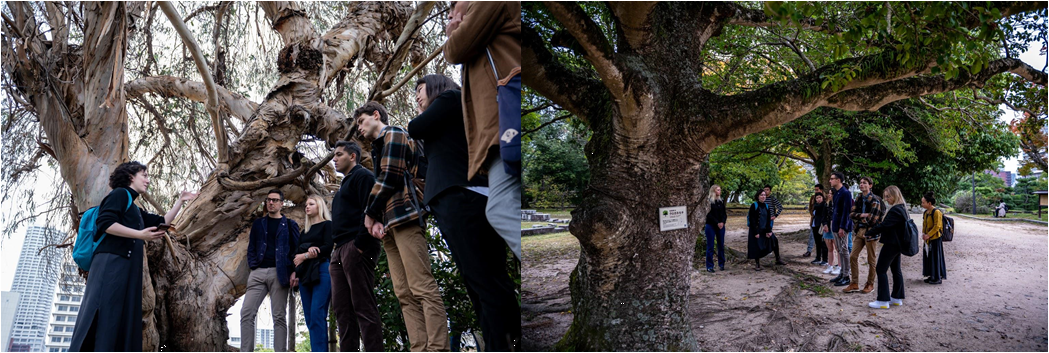
The participants also visited the A-bombed trees in the Peace Park and were impressed by the way they are carefully preserved throughout the city, with one participant saying, “I felt the desire for peace of the citizens of Hiroshima.”
Subsequently, everyone gathered at the venue. The participants prepared for the presentation of training results that they will give in the open session scheduled in the afternoon at this venue.
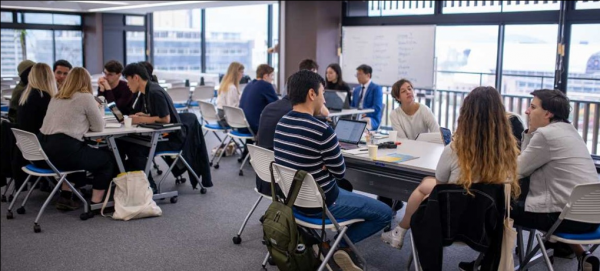
For this presentation, the participants were divided into three groups, and after reflecting on what they had learned in Hiroshima this time and exchanging opinions on which items were memorable and how they would apply what they had learned in the future, they enthusiastically discussed the method and structure of their presentations.
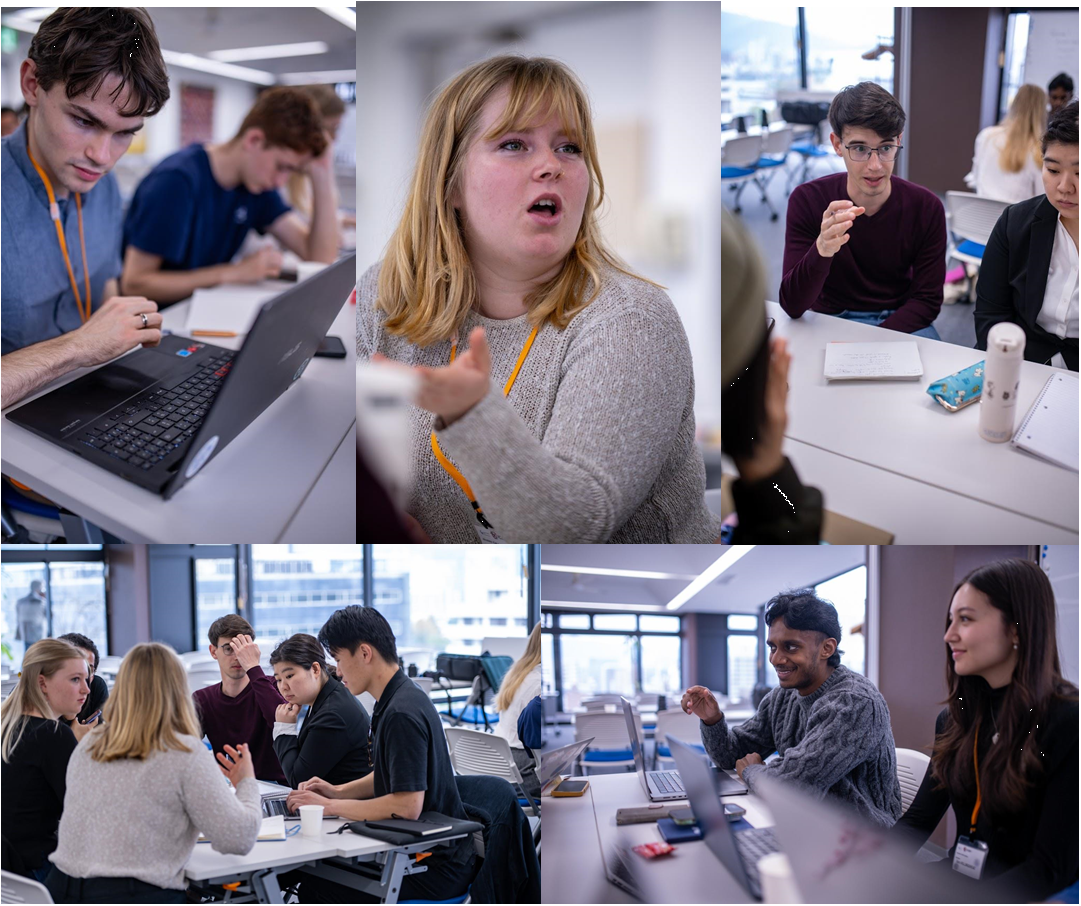
In the afternoon, the presentation of the training results in the open session finally began. All three groups gave presentations, one group at a time, with all members participating.
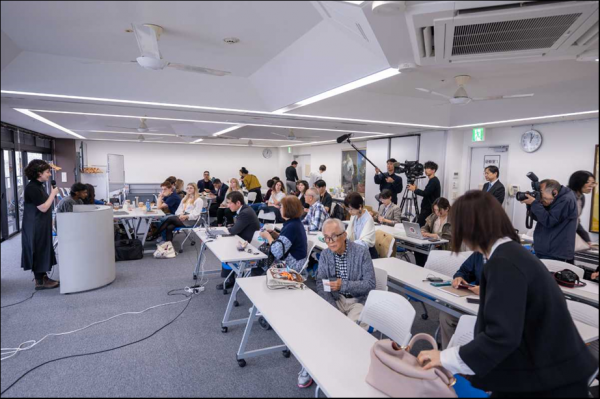
[Group 1]
The first group, using a slide presentation, shared their thoughts on the impressions they received and problems they noticed throughout the entire Hiroshima session.
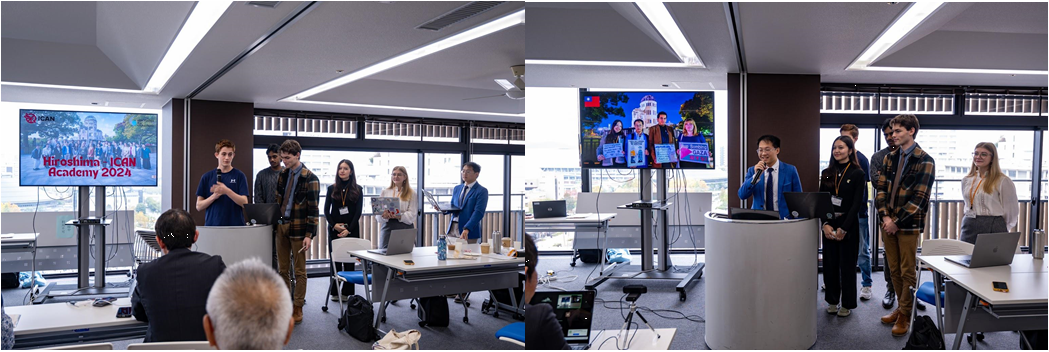
One of the participants, who is studying medicine, said that the Radiation Effects Research Foundation (Rerf) made a strong impression on him and that it was significant to learn about the inhumanity of nuclear weapons from various perspectives, including the effects of radioactive particles on the body even years after the explosion and the controversial investigation by the Atomic Bomb Casualty Commission (Abcc).
Another participant mentioned that he had met with the respective leaders of Hiroshima Prefecture and the City of Hiroshima, and described her realization about what he had learned regarding how to undertake initiatives for peace.
In addition, another participant mentioned that she learned about the negative legacy of the intertwining of imperialism and war by touching on the issue of discrimination against foreign hibakusha such as Koreans and Chinese, and then went on to cite the horror of learning that nuclear weapons of mass destruction can destroy without discrimination as one of the most memorable aspects of the Academy.
Based on the preceding comments, one participant emphasized the importance of young people moving forward as the next step for the younger generation, citing a focus on defending the rights of young people, and said that we should recognize the importance of peace and education for this purpose. Regarding education, the participant also emphasized the importance of a message that can be shared by working with grassroots organizations and building on those relationships to provide more educational opportunities to more people. She urged each of us to take a small step forward, since that message could be the beginning of a passion that leads to action to address the humanitarian consequences of nuclear weapons.
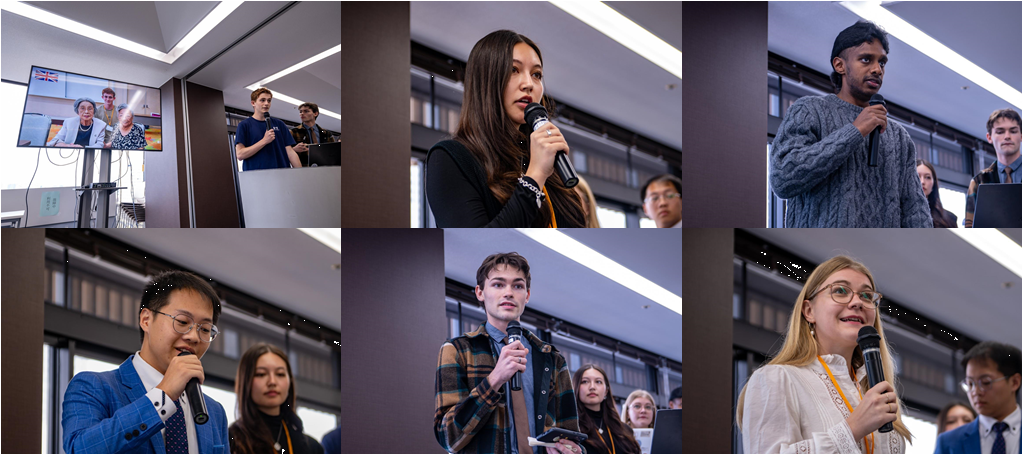
[Group 2]
The second group presented the program on slides in chronological order, and regarding items of interest, each touched on their impressions and what they had learned.
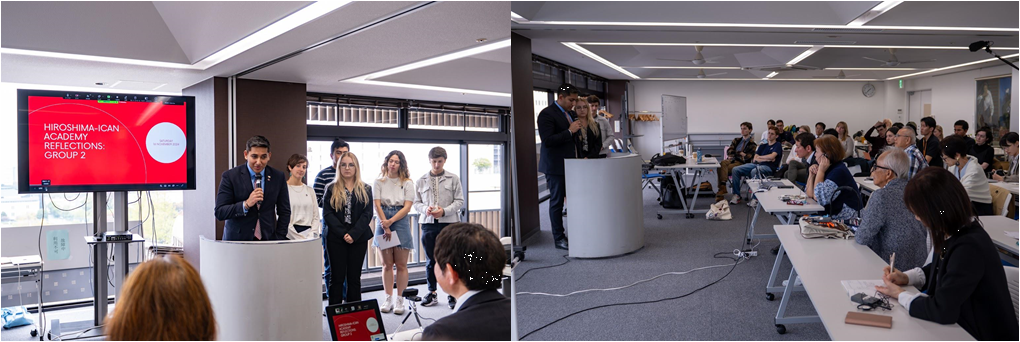
First, one participant talked about the mission and responsibility of each person to pass on what they learned in Hiroshima, since this time people from different countries with different backgrounds, different careers, and different perspectives on life were united in Hiroshima.
One participant recounted the experience and subsequent anger of hibakusha, who were very young at the time, and how shocked she was when she learned how their attitude changed when they met with the American pilot who actually dropped the bomb.
Another participant focused on the Aioi Bridge, the target of the bombing, and expressed shock that a facility that was not a military base was targeted simply because it was easy to find, and said that the lesson he learned was that the use of nuclear weapons cannot be limited to military bases or installations, but inevitably affects civilian life and the lives of us all.
Another participant said that she had heard Sadako Sasaki’s story from her mother, but when she actually stood in front of the Children’s Peace Monument in the Peace Memorial Park and saw it surrounded by thousands of colorful origami cranes symbolizing hope, she felt that the memorial had become a poignant symbol to remember those children who suffered and lost their lives due to the devastating effects of war and radiation, while also emphasizing the urgency of fostering peace since it represents the most vulnerable. She then stated that she was convinced of the need to protect future generations from the horrors of nuclear weapons and to strive to build a world where peace endures.
Based on these comments, she concluded her presentation with the lesson that we must take to heart the words of all hibakusha and never allow another human being to experience the hell that Hiroshima experienced on August 6, 1945, and that hibakusha must carry with them for the rest of their lives.
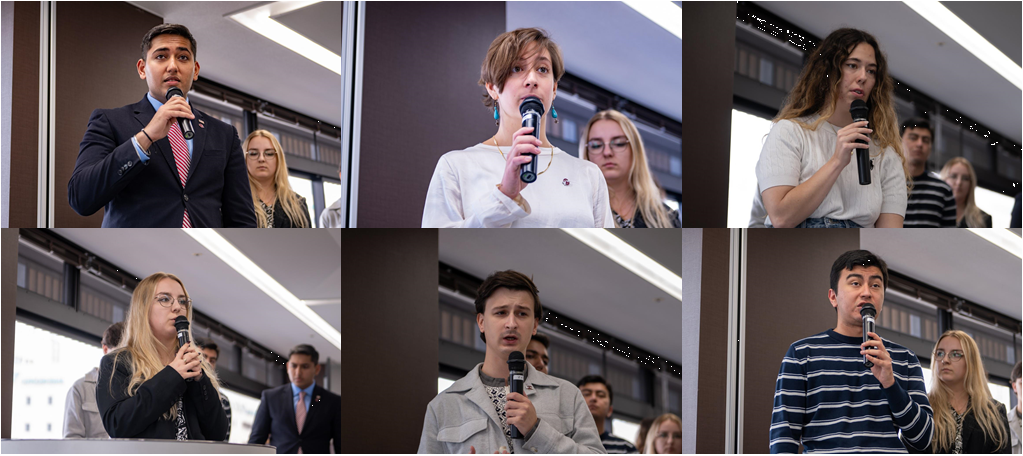
[Group 3]
The third group presented the entire program as a tour, with each individual program likened to a tour bus ride.
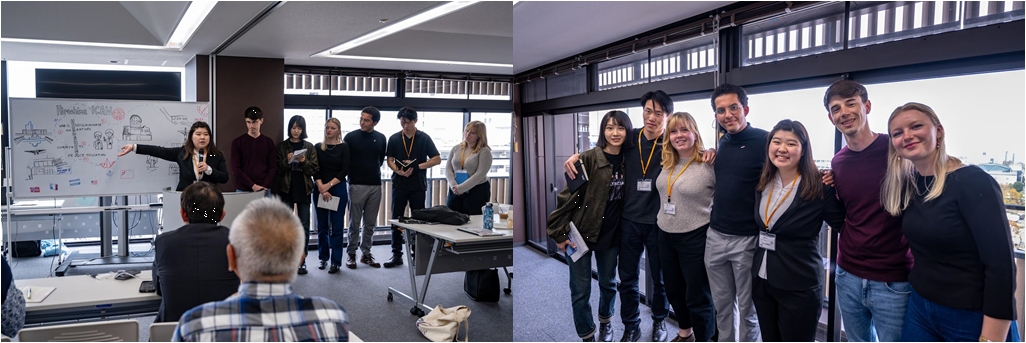
The first participant cited the A-bomb experience of Koko Kondo, an A-bomb survivor whose story was heard during the program, and said that war is indiscriminate and that everyone will be hurt, regardless of age, gender, race, etc. She emphasized that as long as there is war, everyone will be harmed.
The next participant emphasized the importance of understanding alternative perspectives on a single matter, which he said helps us to understand complex situations and creates a sense of purpose. He said that understanding such different viewpoints will be necessary when discussing whether deterrence and disarmament will ultimately lead to lasting peace and that he recognized the importance of hearing opinions that differ from one's own and understanding the underlying context.
Another participant cited the importance of peace education. At a time when access to modern technology is broadening even young children's awareness of current events and increasing their anxiety and outlook on the future with regard to terrible events such as nuclear war, she said that through education, we are empowering children and youth to take control of their own lives and stressed the need to establish the importance of peace among the younger generation.
Based on these impressions and opinions, she concluded her presentation by saying that it is important to take what we learned here back to our own countries and link our movements to regional and global efforts to pursue universal values such as peace, justice, and human dignity.
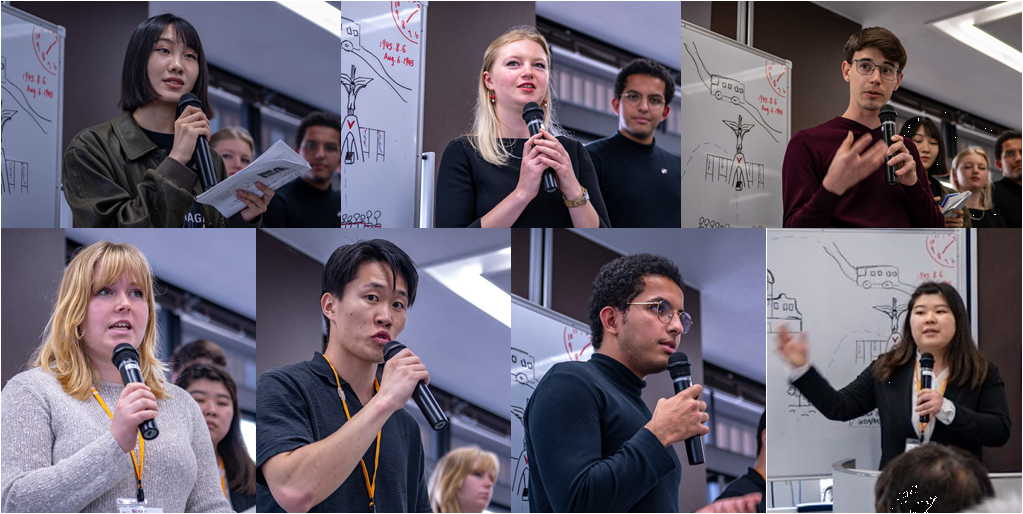
After all groups had finished their presentations, Mr. Akira Kawasaki, an Ican International Steering Committee member, provided feedback and comments.
Mr. Kawasaki commended all the groups for their excellent and inspiring presentations, and in keeping with the theme of the conference, “Sustainable Security for All,” he stated that nuclear deterrence is a “fiction” and that we now understand that nuclear weapons do not provide sustainable and sustainable security for anyone. Reflecting on the participants’ presentations, he said that when thinking about security for all, or security that includes people of different backgrounds, different nationalities, and different positions in society, security that relies on nuclear weapons does not provide sustainable security for anyone. In addition, he expressed his delight that one of the goals of the Academy, to put a humanitarian perspective at the center of the security debate, has, in a sense, been achieved.
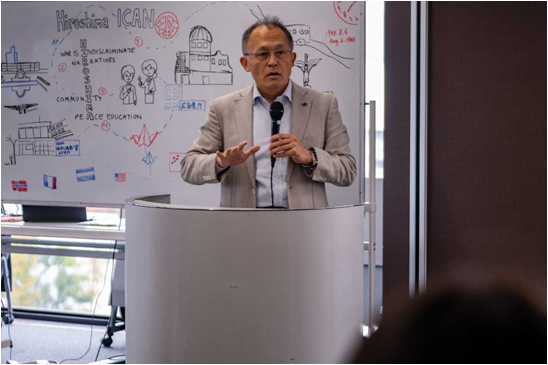
At the same time, however, he sent the message that the participants must think about how they can challenge, persuade, and convince others and how they can build cooperative relationships with others as important next steps to take towards the different ideas and ideologies they will face when they return to their respective countries. He also encouraged participants to keep this in mind in their future activities and research.
Tim Wright, Ican Treaty Coordinator, also expressed his hope that each participant will return home and seriously consider how they can use what they have learned here to contribute toward a nuclear-weapon-free world, saying that the participants are people who will be in positions of influence and that he hopes this Academy has truly taught them important lessons that they can contribute to the betterment of humanity.
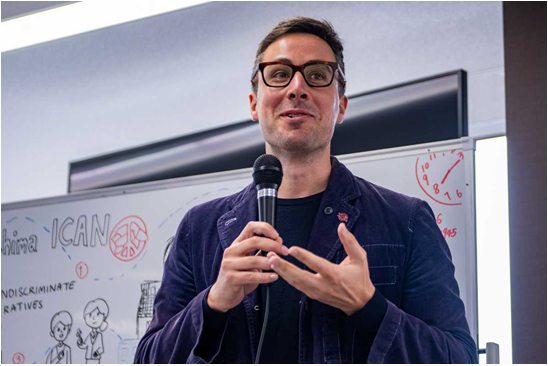
Although the study period in Hiroshima was only four days, one participant said, “This was a life-changing experience. There is a reason why you have to come to Hiroshima.” Another said, “This experience had one of the biggest impacts on my life.”
Each participant had some knowledge of the atomic bombing of Hiroshima, having heard stories or learned about it in school. However, what they actually saw and felt in Hiroshima certainly left a lasting impression on them.
The participants will return to their respective countries, where they will share their experiences in Hiroshima with their families and others around them. We hope that this will help spread awareness of nuclear abolition in their respective countries, even if only a little, and lead to a change in global consciousness.
Other Programs
- Click here to see the Online and webiner session.
- Click here to see the first day of the Hiroshima session.
- Click here to see the second day of the Hiroshima session.
- Click here to see the third day of the Hiroshima session.

